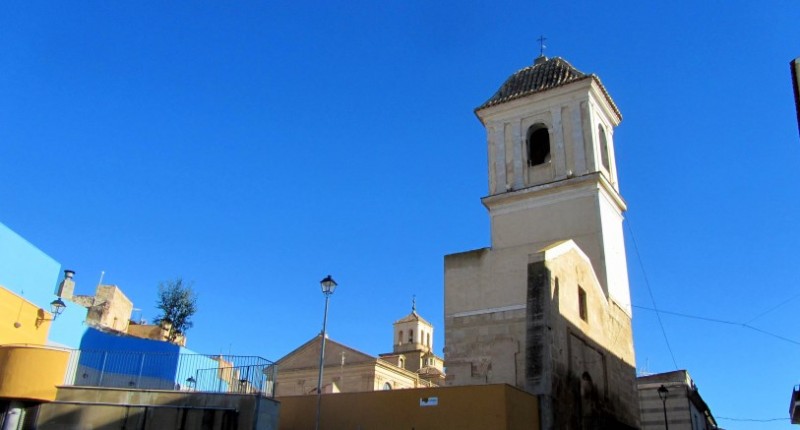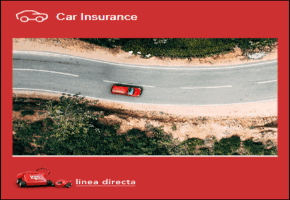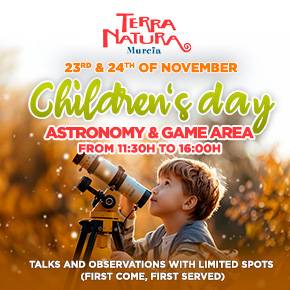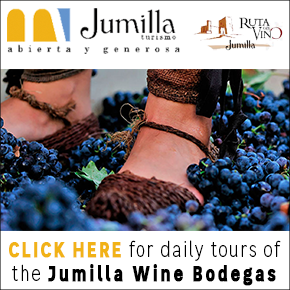- Region
- Águilas
- Alhama de Murcia
- Jumilla
- Lorca
- Los Alcázares
- Mazarrón
- San Javier
-
ALL AREAS & TOWNS
- AREAS
- SOUTH WEST
- MAR MENOR
- MURCIA CITY & CENTRAL
- NORTH & NORTH WEST
- TOWNS
- Abanilla
- Abarán
- Aguilas
- Alamillo
- Alcantarilla
- Aledo
- Alhama de Murcia
- Archena
- Balsicas
- Blanca
- Bolnuevo
- Bullas
- Cañadas del Romero
- Cabo de Palos
- Calasparra
- Camping Bolnuevo
- Campo De Ricote
- Camposol
- Canada De La Lena
- Caravaca de la Cruz
- Cartagena
- Cehegin
- Ceuti
- Cieza
- Condado de Alhama
- Corvera
- Costa Cálida
- Cuevas De Almanzora
- Cuevas de Reyllo
- El Carmoli
- El Mojon
- El Molino (Puerto Lumbreras)
- El Pareton / Cantareros
- El Raso
- El Valle Golf Resort
- Fortuna
- Fuente Alamo
- Hacienda del Alamo Golf Resort
- Hacienda Riquelme Golf Resort
- Isla Plana
- Islas Menores & Mar de Cristal
- Jumilla
- La Azohia
- La Charca
- La Manga Club
- La Manga del Mar Menor
- La Pinilla
- La Puebla
- La Torre
- La Torre Golf Resort
- La Unión
- Las Palas
- Las Ramblas
- Las Ramblas Golf
- Las Torres de Cotillas
- Leiva
- Librilla
- Lo Pagan
- Lo Santiago
- Lorca
- Lorquí
- Los Alcázares
- Los Balcones
- Los Belones
- Los Canovas
- Los Nietos
- Los Perez (Tallante)
- Los Urrutias
- Los Ventorrillos
- Mar De Cristal
- Mar Menor
- Mar Menor Golf Resort
- Mazarrón
- Mazarrón Country Club
- Molina de Segura
- Moratalla
- Mula
- Murcia City
- Murcia Property
- Pareton
- Peraleja Golf Resort
- Perin
- Pilar de la Horadada
- Pinar de Campoverde
- Pinoso
- Playa Honda
- Playa Honda / Playa Paraíso
- Pliego
- Portmán
- Pozo Estrecho
- Puerto de Mazarrón
- Puerto Lumbreras
- Puntas De Calnegre
- Region of Murcia
- Ricote
- Roda Golf Resort
- Roldan
- Roldan and Lo Ferro
- San Javier
- San Pedro del Pinatar
- Santiago de la Ribera
- Sierra Espuña
- Sucina
- Tallante
- Terrazas de la Torre Golf Resort
- Torre Pacheco
- Totana
- What's On Weekly Bulletin
- Yecla


- EDITIONS:
 Spanish News Today
Spanish News Today
 Alicante Today
Alicante Today
 Andalucia Today
Andalucia Today
Interesting corners of Jumilla old town and the surrounding area
Pick up a street map from the tourist information office and discover the historic town of Jumilla on foot
Click for Tourist Information office Jumilla
Cuatro Cantones
“Cuatro Cantones” is the name given collectively to the oldest streets in Jumilla, where people first started to settle after moving outside the safety of the walls of the castle, which in Moorish times was located on the lower slopes of the hill atop which the later medieval fortress still stands. The first Town Hall was located on Calle Capitán in the 13th century and remained in use until the mid-16th century.
The name of the area is derived from the administrative division of the old “Villa” of Jumilla into four “cantones” or districts, each of them administered by one Town Hall official.
The church of Santa María del Arrabal
Built in approximately 1430, after the preaching of San Vicente Ferrer had had a dramatic effect in Jumilla, the church of Santa María del Arrabal was located on top of an old Moorish burial ground and industrial quarter dating from the 12th and 13th centuries. This was where the inhabitants met to elect the officials of the “Villa” of Jumilla, but the building was demolished in 1979 and only the main tower now remains.
This was the parish church of Jumilla until the church of Santiago was built. The interior featured a wooden ceiling and the altarpiece was decorated with a painting of the Virgen del Rosario and Santo Domingo. Above the keystones of the arches were Gothic reliefs depicting fantastic and surreal animals.
The “La Estacada” botanical garden
The “La Estacada” garden was created by the IRYDA department of the national Ministry for Agriculture, and while the botanical garden occupies an area of 19,547 m2 another 15,000 m2 belong to the wooded garden.
Among the 150 plant species growing here the highlights include Gingko biloba fossil plants (belonging to a family and genus of which only two species survive), famous for having survived the atom bomb in Hiroshima, and the Cycas revoluta, known as the sago palm although it bears little relation to other palm trees. Also featured are several varieties of cypresses and cedars typical of Asia and northern Africa, some of which, like the Nootka cypress, extend all the way from Alaska to northern California.
El Casón
The “Casón” is a late Roman funeral monument dating from the 5th century AD and is the best-preserved structure of its kind created by the Roman Empire in Europe. Inside there are three niches in which coffins were placed.
The building contains just one room with a semi-pointed vaulted roof and the two side areas have small windows. The main entrance faces the rising sun and the roofs are made from stone mortar and covered in “Opus Signinum”, or cocciopesto.
The Casón was awarded National Monument status in 1931.
El Pasico de San Pascual
This small shrine was built on the spot where Saint Pascual Bailón used to rest when he was returning to the monastery of Santa Ana, in the mountains south of Jumilla. Its construction dates from 1738, when Andrés Arcis was Father Superior of the monastery, commemorating the Saint who lived within its walls from 1579 to 1581.
In 1901 it was restored by Pascual Moreno Ramos.
The church of San Antón
The church of San Antón was built in 1611 on the old road to Granada (the Camino de Granada), in the outskirts of the town. Originally designed in the shape of a Latin cross, with all the modifications it has undergone the floor plan is now a Greek cross with a single vaulted nave, a crossing and a dome supported by pendentives with a skylight which illuminates the rococo decoration on its interior. The pendentives bear floral decorative motifs surrounded by black ovals featuring the ankh cross of San Antón, a design which can also be seen on the lintel of the side door. At the base of the dome is the coat of arms of Castilla surrounded by the necklace of the Order of the Golden Fleece, represented in painted plasterwork.
When the urban area of Jumilla grew and absorbed the church it was converted into a hospital and later into a school, losing its main entrance and part of the nave. The main door belonged to a 19th century noble house.
The monastery of Santa Ana
The monastery of Santa Ana del Monte was founded on the site of a small chapel built in the mid-15th century. On 4th August 1573 Brother Miguel Cleques took over the church with a small community of Franciscan monks and began to build dormitories and the cloister on the same spot.
The interior is full of religious images and miraculous little corners, such as the “Cristo de la Reja”, who freed his right hand from the Cross and blessed the people three times, and the “Cristo de la Sangre”: the blood from the wound on the side of the statue is said to have dripped on the head of Father Mancebón as he prayed beneath it in the 18th century.
In 1613 the Marqués de Villena, a devout worshipper of Santa Ana, sent 236 relics to the monastery from Italy, making it home to the third highest number of authenticated religious relics in Spain.
The highlights include the images of “Cristo Amarrado a la Columna” (Christ tied to the whipping post), by the Murcia sculptor Francisco Salzillo, and “La Abuela Santa Ana”.
The chapel and museum of the “Cofradía del Rollo”
This chapel, located in the neighbourhood with which it shares its name, was built following plans drawn up by the Jumilla architect Tomás Menor, and in much the same way as the Pazzi chapel by Brunelleschi (Florence, 15th century), its bare artisan brickwork in varying tones and the harmonious and coherent overall design give it a three-dimensional appearance of light and shadow.
The stand-out feature is the grand main door, 6 metres high and built with iron tubes and hardwood panels, with the insignia of the Brotherhood prominent on the door itself.
The chapel was built in 1997.
The museum of Jesus of Nazareth
The “Museo de Jesús Nazareno”, an important repository of artwork belonging to processional brotherhoods, is located in the Plaza de Arriba, one of the most iconic parts of Jumilla within the historic and artistic heritage site of the old centre.
The most outstanding and richest elements of the building are the façade and the dome.
The interior consists of 3 spacious rooms, two of which are home to the range of artistic heritage which the brotherhood has acquired over the decades. On the one hand there are the sculpted tableaux which are paraded through the streets in the processions of Semana Santa (Easter Week) and on the other, the works of art included in the paraphernalia of the processions, such as crosses, standards, tunics, embroideries, gold and silverwork and the like.
On the underground level is the “D. Roque M.” exhibition room, which is used for numerous cultural events of all kinds, including not only exhibitions but also concerts and workshops.
The museum belongs to the regional “Museos de Murcia” network.















